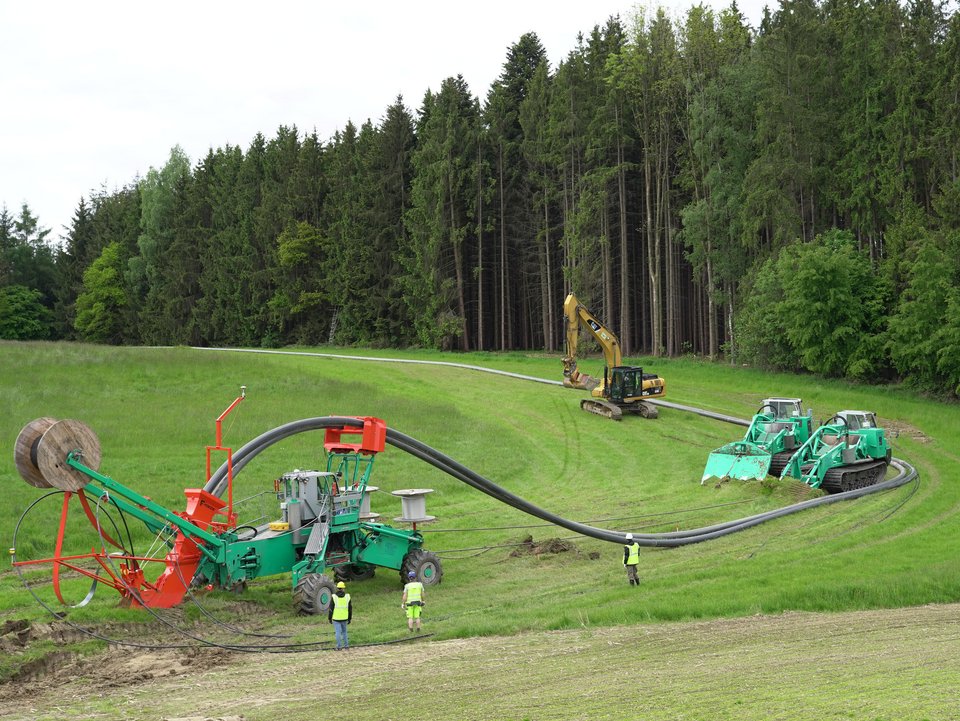TenneT tests the ploughing method for laying underground cables
Although the approval process for SuedOstLink has not yet been completed, we are already preparing intensively for the construction phase, which is expected to begin in 2023. In doing so, we are drawing on extensive experience from underground cable projects that have already been realised. In the past few years, the open construction method has established itself as the standard laying method for these projects. This involves digging cable trenches, which are then carefully backfilled with the excavated material after the underground cables have been laid. For SuedOstLink, we are planning to use two cable trenches for the total of four underground cables for projects 5 and 5a, which will be laid in protective plastic pipes.
However, as an alternative to the open trench method, the so-called ploughing method has been increasingly used for some years now, especially for the underground laying of telephone and internet cables. In May, we tested this innovative technique on an area near Landshut for the laying of the protective pipes for the SuedOstLink.
After extensive surveying work, the first step was to dig a starting pit about four metres long instead of a cable trench. The laying plough with laying shaft, specially constructed according to the requirements of the SuedOstLink, was lowered into this. This plug is connected to a large plough vehicle. The plough vehicle was pulled by two large winch vehicles with a total force of 180 tonnes. In the process, the laying plough displaced the soil in the direction of travel. The two DC cable protection pipes as well as fibre optic cable protection pipes, earthing ropes, cover and warning tapes slid under the earth's surface and were inserted directly into the soil. From the outside, all that could be seen was how the protective tubes and the other elements to be inserted were pulled into the laying shaft. Behind the plough, an excavator pressed on the topsoil to restore the test area to its original condition.
The results of our experiment will provide information on whether the ploughing method can cope with the demanding conditions at SuedOstLink with four protective pipes. Because past experience shows that steep terrain, stony or rocky ground and crossing roads, rivers and utility lines present particular challenges for the ploughing process, we selected an agricultural area on a slope for our experiment and planned several curves for the ploughing section.
Already during the experiment, we used sensors installed on the laying plough and the laying shaft to check whether the protective pipes were laid at the right depth as well as at the right distance from each other. After the work was completed, we took soil samples to analyse what influence the ploughing had on the soil conditions. Further tests will also take place in the coming months. We will comprehensively evaluate all the data and samples collected. Only then will we know whether the ploughing method could be used for SuedOstLink. The first results of our test in Wurmsham are expected to be available in autumn.
